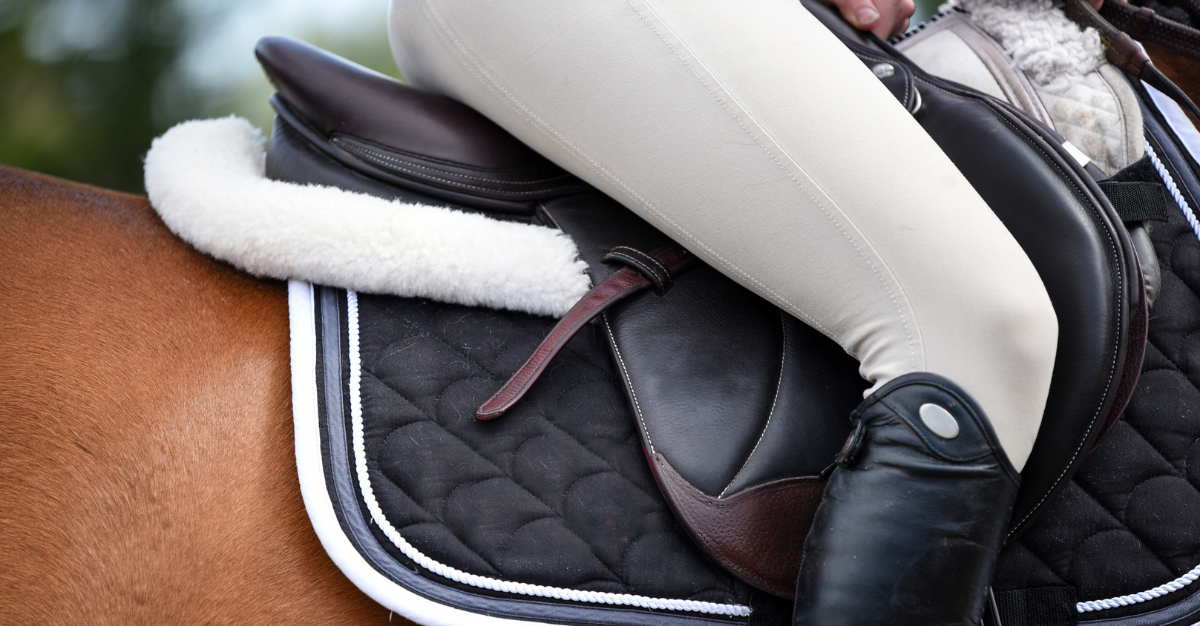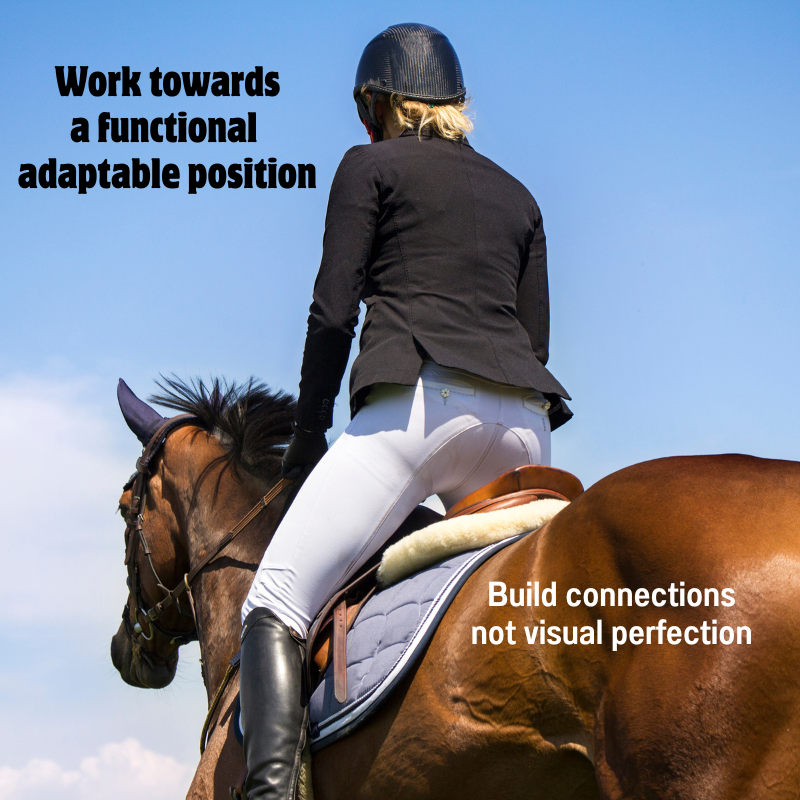What Is the Rider’s Weight Aid
And How Does It Improve Riding?
The rider’s weight aid is subtle, powerful, and often misunderstood. A communication point between you and your horse. When it’s light, the horse can listens to subtle balance shifts and react. But when it’s forced, unstable, or too deep, it’s more like a handbrake grinding against the horse’s back, restricting the movement of the horse’s entire body.
Your balance and body control matter as even at a subtle level it can block the horse’s movement. Sadly, it has become a trend for some rider’s to lean back, forcing and over riding every step. I was originally taught how to use my seat by a coach who asked me to:
“Just think about what I wanted my seat to do, don’t resist, overthink or force it just let it happen”
Connecting my brain and body to create a subtle aid that made such a difference to my riding. It became a quiet conversation, listening and responding to each other’s movement.
The affects of many pelvic posture’s aren’t recognised
The Independent Seat: What It Is and Why It Matters for Riders
Riding is unlike anything we do in our everyday life. We’re constantly making subtle balance shifts and joint repositioning movements while riding to follow the horse’s movement.
We also bring many unique pelvic alignments to the saddle. But what is an independant seat? The definition of ‘independent’ is “free from outside control; not subject to another’s authority”.
But did you know that your entire body influences your seat? All your body parts above the seat and below your seat affect your seat (just think about that for a moment) and the way you can distribute your weight through your seat.
The weight aid isn’t isolated to the seat area; it’s the result of the teamwork from the whole body and how it individually allows and supports the many movements of the pelvis.
“ Your posture where your parts sit affects the forces and weight distribution through your body, which filters through your seat.”
The Bigger Picture: Your Whole Body Shapes Your Seat
Now think about your posture. If you, for example, have:
A slight head tilt
Tight back
A ribcage that slightly twists one way or thrusts upwards
Forward head posture
All these postural changes affect how your seat moves and connects. You may have tension in your pelvis, tight hamstrings and/or calves, stiff ankles. Anything in your leg and foot will transmit up towards your seat. Affecting your balance by pulling and pushing your body’s natural alignment.
The independent seat, to me, is one where the rider has good awareness, control, balance, and coordination. It’s not about a perfect visual picture, it’s about the body connecting as one.
Many riders feel they don’t have the “ideal” rider conformation, or maybe an injury has left them with restrictions. Every rider I’ve known has improved by meeting their body where it’s at and strengthening those internal connections.
The Riders Seat And Weight Aid
Many riding trainers talk about a neutral or upright pelvis, and what happens when the pelvis is tips forwards or back. But there are many more pelvic postures that riders bring to the saddle, as I demonstrate in the video below.
To improve your seat, you want an upright or neutral pelvis to be your baseline that you can easily move in and out of through all the ranges you need. What I want you to realise is that:
“How you use your body throughout the day has largely shaped the posture you bring to the saddle”.
Alongside things like previous injuries, footwear choices, and more. The good news is? it’s changeable.
Your seat may not be the problem. Because now, you can begin to see how the rest of your body influences your seat. Often, the areas we repeatedly struggle to correct are the end of a line of a pattern of adaptation not the root cause.
Different rider pelvic positions
✅ Takeaways
The rider’s weight aid is subtle, powerful, and often misunderstood.
Think about what you wanted your seat to do; don’t resist, overthink or force it, just let it happen.
All your body parts above the seat and below your seat affect your seat.
A neutral pelvis should be your baseline that you can easily move in and out of through all the ranges you need.
You don’t have to have what’s termed as the perfect riding conformation. Strengthening the connections through your body will make a big difference to your riding.
Want To Improve Your Seat?
Ive created a free guide together with simple layered strategies that take very little time and help you connect with your seat and help your alignment. You may have some interesting finds! ⬇️





